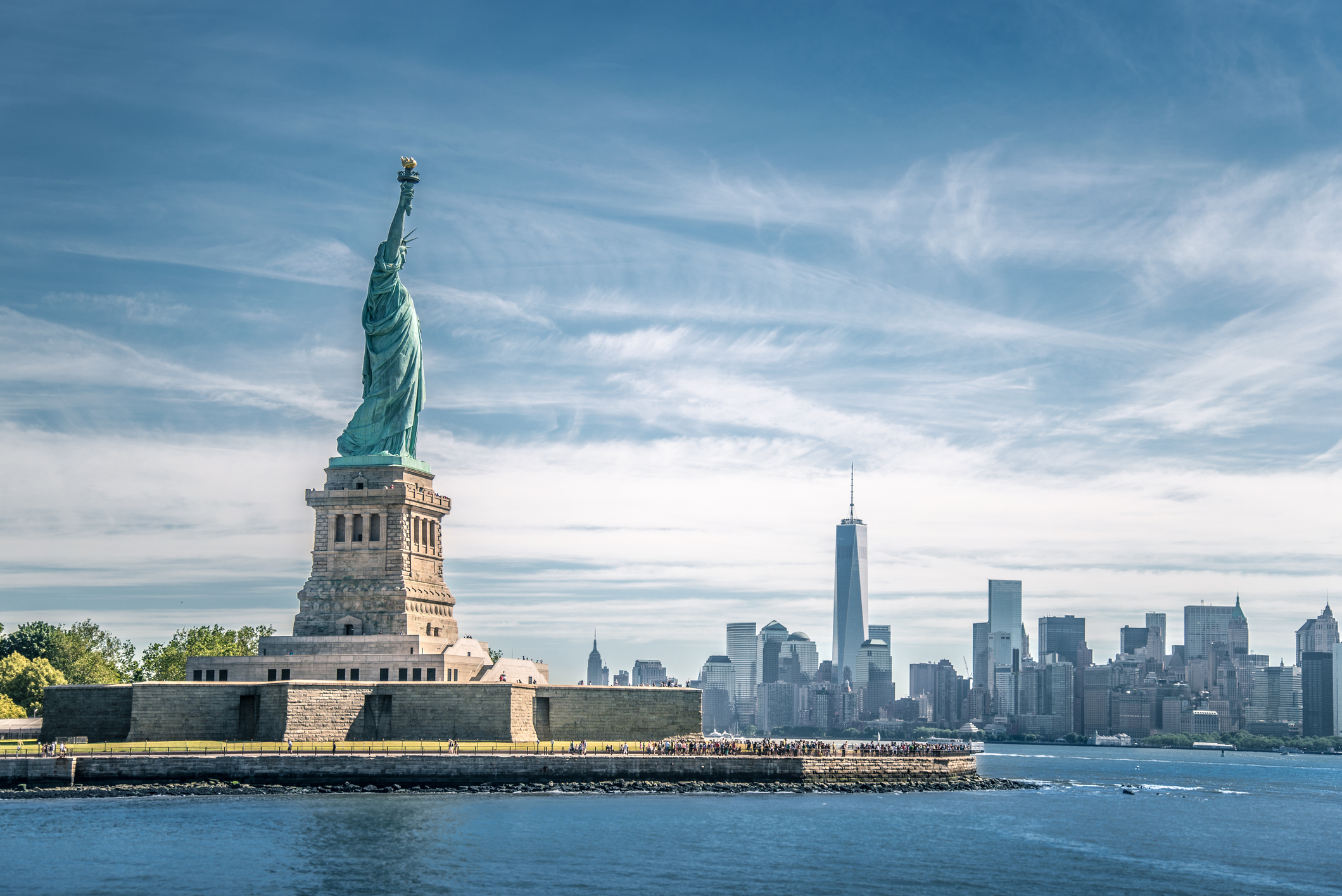
The Trump Administration has significantly increased regulation of immigration—to the nation’s detriment.
If there is one thing that most commentators agree on about President Donald J. Trump’s economic policies, it is that he promotes deregulation. American Enterprise Institute President Chris DeMuth lauds him for being a “full-spectrum deregulator.” Susan Dudley, a leading academic expert on regulation, similarly concludes that Trump has made “undeniable” progress on the deregulation front. Most liberal commentators agree that Trump has been a deregulator, even if they differ from DeMuth and Dudley in their normative evaluation of his actions.
But the near-universal belief that Trump is a deregulator is in need of serious revision. His Administration’s immigration policies are nothing of the kind. Not only do they increase regulation, but they likely do so far more than Trump’s other policies decrease it.
According to the Administration’s own recently released estimate, its deregulatory actions create net savings for the economy of some $570 million per year. This actually is not a large number in an economy with a GDP of some $18.57 trillion in 2016; barely more than a rounding error. And, like most administrations, this one may well overestimate the benefits of its actions. Still, the $570 million figure is worth considering, and much of it surely represents real progress. But, like most analyses of Trump’s regulatory policies, this one does not consider immigration policy as a form of “regulation.”
There is no good reason for this omission. Immigration restrictions prevent Americans from hiring, renting property to, and engaging in numerous other economic transactions with would-be immigrants. Even if we focus only on their narrowly “economic” effects, such policies surely qualify as a form of regulation, if anything does.
And those effects are very large. For example, the Administration has reduced the cap on the number of refugees the U.S. admits annually from 110,000 to 45,000. A recent analysis by leading immigration economists Michael Clemens, Lant Pritchett, and Claudio Montenegro finds that migrants (including low-skilled ones) from poor nations to advanced ones generally stand to make some $13,600 to $15,600 in additional annual income. If we assume that even half of the additional 65,000 refugees would have work, that means a loss of roughly $450 million per year in additional wealth that would have been created by letting them enter the United States. A recent National Bureau of Economic Research study actually shows that refugees have higher employment rates than native-born Americans, albeit with lower average incomes than natives. Even immigrants with less than a high school education make a net-positive fiscal contribution to government coffers, if they enter before the age of 25, according to a major National Academy of Science study, and a majority of refugees admitted in 2015 were indeed under 25. While it is difficult to make precise comparisons, the reduction in refugees alone is probably enough to offset most of the estimated annual economic gains created by Trump’s deregulation in other areas. At the very least, the two figures are in the same general ballpark.
And, of course, the effect will be increased if Trump continues to keep refugee admissions at a similarly low level in future years. If (as is likely) 2018 refugee admissions are also capped at 45,000 rather than 110,000, the negative economic effect of Trump’s refugee policy will be doubled as compared to that of the 2017 reduction alone.
Massive reductions in refugee admissions are just one of many ways in which the Administration has reduced immigration. It has also ramped up efforts to deport undocumented immigrants, particularly those who have committed no crimes. It has increased regulatory barriers to obtaining immigration visas, made it harder to obtain and extend H1-B visas for skilled workers, ended Temporary Protected Status (TPS) for over 300,000 people who came to the U.S. fleeing various disasters in El Salvador, Haiti, and elsewhere, and adopted a host of other policies making immigration more difficult.
In September, the President announced that, within 6 months, he would terminate the Obama Administration’s Deferred Action for Childhood Arrivals (DACA) program, which exempted from deportation some 700,000 or more undocumented migrants who had been brought to the United States as minors, and have established lives here, often with little or no connection to their previous countries. The latest version of Trump’s “travel ban” order categorically bars nearly all citizens of six Muslim-majority countries from entering the United States, even those who have job offers or close relatives here.
Congress, so far, has refused to allocate money for Trump’s much-ballyhooed wall across the Mexican border. But, as the Washington Post puts it, “across agencies and programs, federal officials are wielding executive authority to assemble a bureaucratic wall that could be more effective than any concrete and metal one.” Total deportations have actually declined slightly in 2017, in large part because fewer undocumented immigrants are apprehended at the border due to a reduction in the number attempting to cross. But the administration has greatly increased arrests in the interior of the US, and clearly seeks to maximize the number deported or prevented from entering the US to begin with.
We do not have anything approaching a definitive estimate of the number of immigrants, refugees, and foreign workers Trump’s policies have either deported or prevented from entering the U.S. in the first place. But the numbers likely approach many tens of thousands. By any plausible measure, the annual economic costs of these policies substantially outweigh the potential gains from Trump’s deregulatory actions in other parts of the economy.
Lost income and productivity gains, and other narrowly “economic” effects, are far from the only costs of Trump’s immigration policies. Many of the refugees and other immigrants kept out by the Administration face privation, oppression, or even death as a result. Consider the case of refugees fleeing the Syrian civil war or Cubans and Venezuelans fleeing their repressive governments. At the very least, most can expect a lifetime of poverty and stunted opportunity in underdeveloped nations.
Consider, also, the harm caused by such policies as the deportation of undocumented parents of U.S.-citizen children, a practice much expanded by the Trump Administration; or the separation of families imposed by Trump’s travel ban, which forbids immigration—indeed even visits—by very close relatives of U.S. citizens from the affected countries. The cruelty of these policies is exemplified by the notorious recent deportation of a Detroit resident who came to the US at the age of ten, has lived here for thirty years, and leaves behind a wife and two children who are US citizens.
It is probably impossible to quantify such effects with any precision. But their impact is surely great. None of the domestic regulatory restrictions lifted by Trump have such massive life-altering consequences for so many people as his immigration policies do.
The impact is by no means limited to immigrants. American citizens also face substantial costs, both narrowly “economic” and otherwise. American businesses and consumers obviously suffer from losing the productivity of those excluded or deported by the Administration. American citizens also obviously suffer from being cut off from family members who are deported or banned from entering the United States.
In addition, expanded efforts to deport undocumented migrants also harm American citizens. Shockingly, the federal government probably detains or deports several thousand American citizens every year, on the assumption that they must be illegal aliens. Once arrested by immigration authorities, these people are “swept into the Kafkaesque nightmare of the immigration system, [where] they are effectively assumed illegal until proven otherwise,” as immigration expert Shikha Dalmia puts it. Because of weak due process protections in the immigration system, it can be difficult or impossible for them to secure their release.
The immigration enforcement system also allows the use of racial and ethnic profiling in “border” areas, defined so broadly that they sweep in areas where some two-thirds of the US population lives. As a result, millions of Americans are subject to search, detention, and harassment by law enforcement officials, simply because they look like they belong to the same racial or ethnic group as undocumented immigrants. No other US government policy openly authorizes the use of racial and ethnic discrimination on such a vast scale.
While we do not yet have good data on the subject, both racial profiling and negligent deportation of US citizens have likely increased as a result of the Trump administration’s efforts to ramp up deportations, and cut back on due process protections for migrants it seeks to expel.
The administration claims that its immigration policies are justified by the need to “enforce the law.” But most, including the travel ban, the rescission of TPS protection, the new bureaucratic hassles imposed on visas applicants, and the reduction in refugee admissions, are not required by any law adopted by Congress. The administration’s claims that the DACA was illegal are extremely weak, even though the decision to rescind it is also legally defensible. Both are plausible exercises of enforcement discretion. The travel ban not only is not required by law, but arguably violates both the Constitution and federal immigration law banning national origin discrimination in visa policy. Moreover, in a world where there are far more federal laws—and far more lawbreakers—than the government can even come close to fully enforcing, the executive has very broad discretion to decide which violators it chooses to go after. Trump’s decision to prioritize immigration enforcement over that of most other federal laws is a policy choice, not a legal necessity.
Even before Trump, immigration restrictions were among the most far-reaching and costliest forms of government intervention in the economy. Economists estimate that eliminating immigration restrictions worldwide could potentially double world GDP, a far great expansion of wealth than is likely to be achieved by any other policy change. The conservative American Action Forum calculates that complying with immigration regulations costs American businesses and immigrant workers some $30 billion per year just to deal with the necessary documentation and red tape. Immigration policy must be a central element of any assessment of government regulation of the economy. And a president who seeks to massively expand this form of regulation cannot be considered a deregulator.
This essay is part of a seven-part series, entitled Regulation in the Trump Administration’s First Year.




